
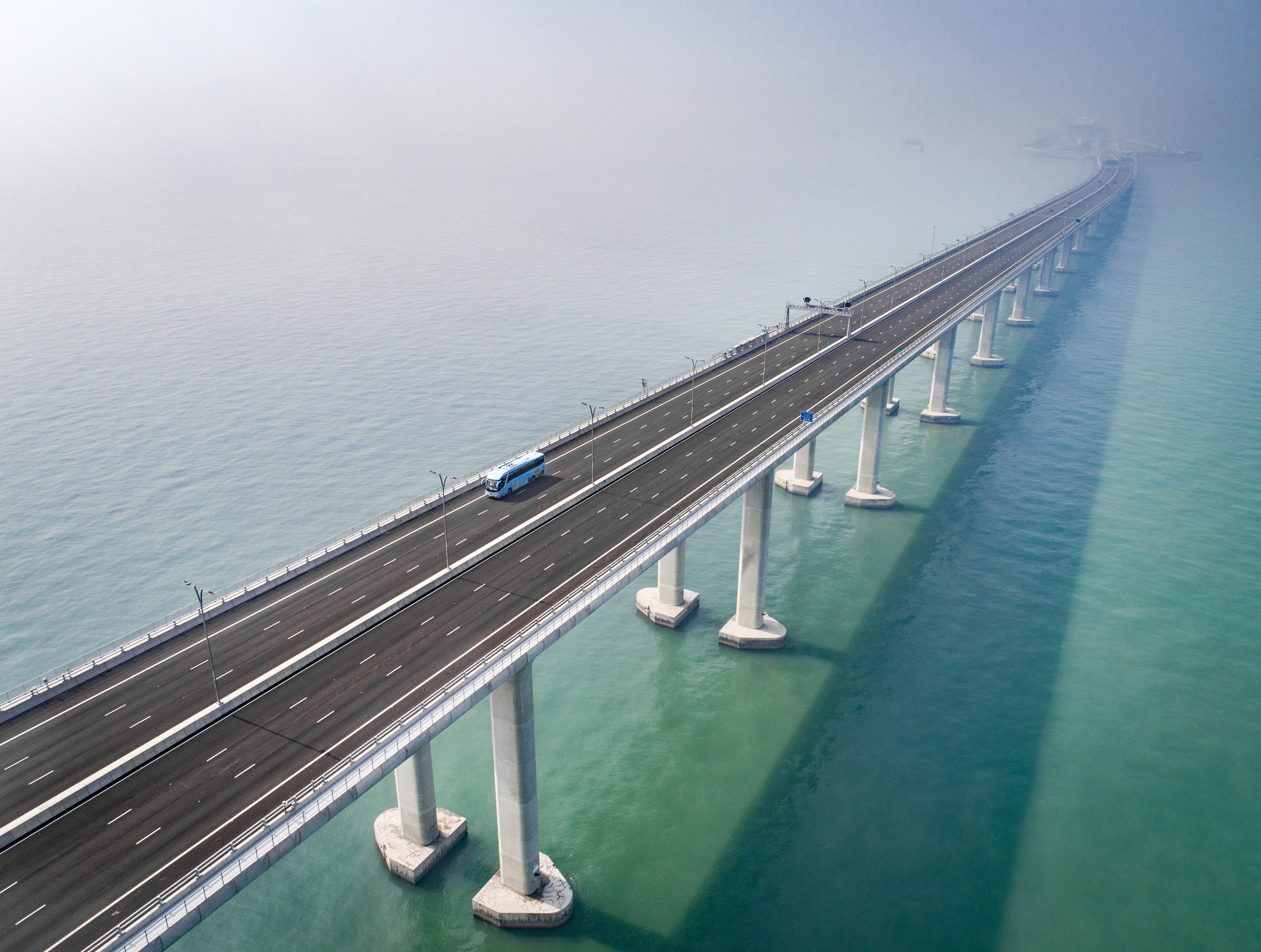
- Hong Kong influencers focus their cameras and reveal what they find beautiful about the newest addition to the city’s infrastructure scene
- Bridge helps connect three cities in Greater Bay Area, while boundary crossing facilities serve as transport hub in and out of city via the bridge
If you have seen the Hong-Kong-Zhuhai-Macau Bridge (HZMB) from a distance, or if you have travelled across it by car, you probably have an understanding of just how technically complex it is, and what an impressive feat of engineering it is.
You may have passed through the Hong Kong Boundary Crossing Facilities (HKBCF), the station that sits to the northeast of Hong Kong Airport, acting as a transport hub for buses, trucks, cars and people moving in and out of Hong Kong via the bridge.
However, you may not have looked beyond the practical to discover the architectural beauty of the bridge’s clean lines, or the undulating forms and vibrancy of the HKBCF.
That’s why we asked four Hong Kong influencers and photographers to look at the bridge and the boundary crossing facilities through a creative lens.
Abdela Igmirien, Derry Ainsworth, Gideon de Kock and Michael Kistler offer their contrasting perspectives – telling us what, in their view, is beautiful about these architectural ventures and also offering their foolproof tips on how to take a great picture.
Portrait of edgy Instagram sensation
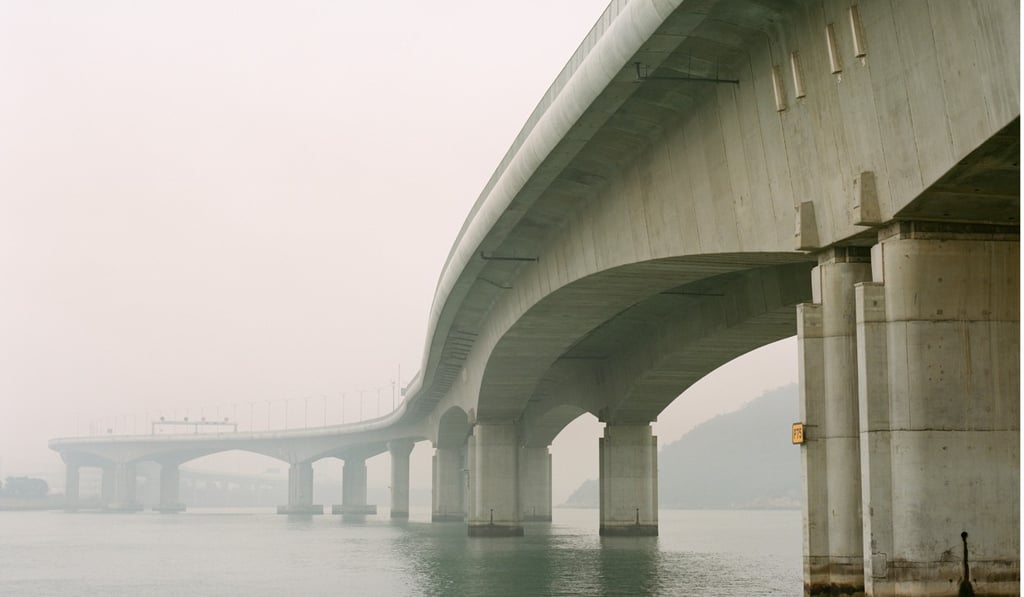
Igmirien started out as an engineering surveyor, before flipping his career 180 degrees to become a photographer a few years ago.
It was a wise move: he’s now an Instagram aficionado, with more than 24,000 followers and a sideline teaching social media know-how to Hong Kong’s workforce.
I like to always present shapes in my work … [and the bridge’s curves] make this an aspect not to miss when talking about it
Originally from Morocco, this passionate young photographer says he “draws inspiration from all that surrounds me: people, places, movies, music, travel”.
Igmirien says: “I started [out] with street photography; it has always been about people in their space, mostly in the city, as it’s a way for me to discover any new city I travel or move to. That’s how I was mostly photographing urban spaces, always with a human presence.”
What makes the bridge beautiful for him is “its curves”, he says.
“I like to always present shapes in my work … [and the bridge’s curves] make this an aspect not to miss when talking about it.”
His fresh, edgy images of the bridge and HKBCF are a departure from his usual work, in terms of their subject matter.
“I usually shoot portraits, so it was a little challenging for me to show my style in these pictures even though they’re not of people,” he says.
“I tried angles that show less, while presenting a nice minimal side of the bridge or the crossing facilities.”
He has sound advice for wannabe photographers looking to shoot the bridge and HKBCF.
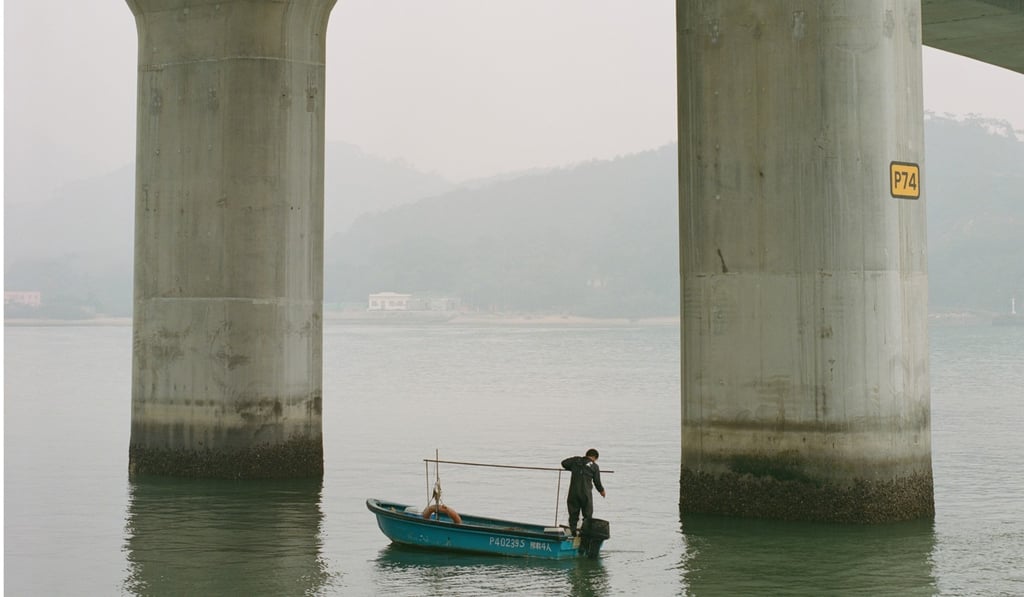
“For the bridge, there are some really good spots to take photos from, and by going to Sha Lo Wan – by taking a ferry from Tung Chung – you can get really good vantage points with aeroplanes flying out of the airport,” he says.
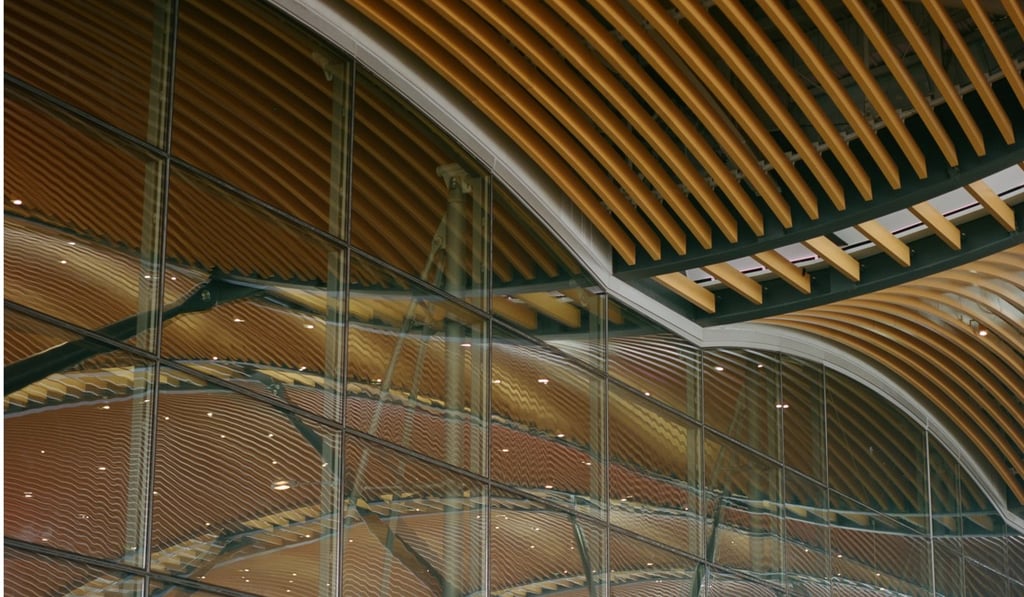
“For the facilities, you can either go to the far right or left of the station and take photos of the corners by looking up or take photos of the reflection of the ceiling in the big windows.
Architect focuses on perspective and composition
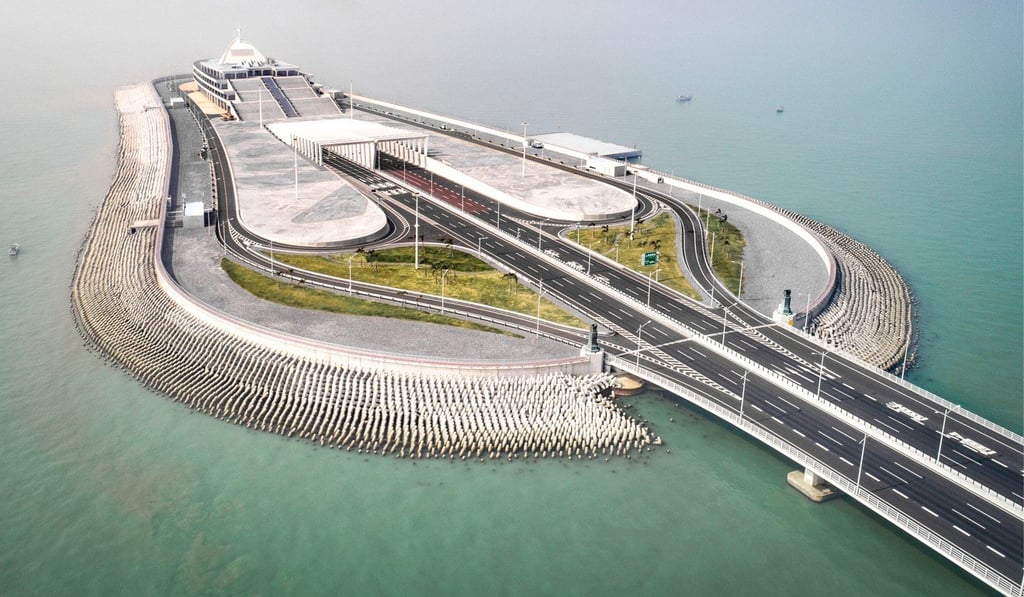
This Briton was an architect in the UK and Hong Kong before embracing a full-time career as a photographer.
He fully discovered photography while on his travels: he bought a one-way ticket to Asia and left the UK with his camera in tow.
He spent a couple of years in Hong Kong before quitting his job as an architect to focus on photography and form his company, Derryography. But his background in design still influences his approach to the images he takes.
Certainly, having a degree in architecture has taught me how to pay special attention to perspectives and composition
“As a photographer, capturing buildings and structures in a unique way is what inspires me,” he says. “I love trying to show people new perspectives of places.
“Certainly, having a degree in architecture has taught me how to pay special attention to perspectives and composition.
“I think it has developed my eye for photography and trained me to look for unique and interesting angles on everything I shoot.”
So how did this influence his shots of the bridge?
“I chose to use aerial vantage points to show the length of the bridge and to give it scale,” he says.
“For me, the most beautiful thing about the bridge is the sheer length of it, how it’s so long, it almost fades into the horizon.
“The most beautiful thing about the boundary crossing facilities is the modern architecture that sits above the entrance to the tunnel.”
If people want to take aerial photographs of the HZMB, Ainsworth says they should “try to get an angle that shows the length of the bridge well.
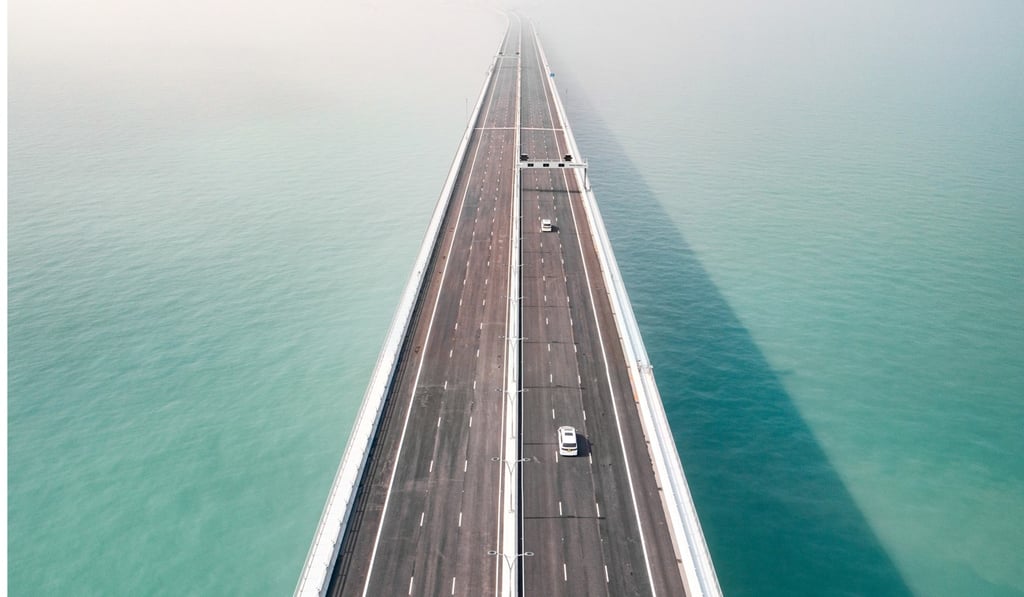
“Also consider the time of day and the angle of the sun when you take the photos; late afternoon works well, as it casts a strong shadow to the side, which helps to add depth to the shot and define the structure of the bridge.”
Candid photographer looks for bigger picture
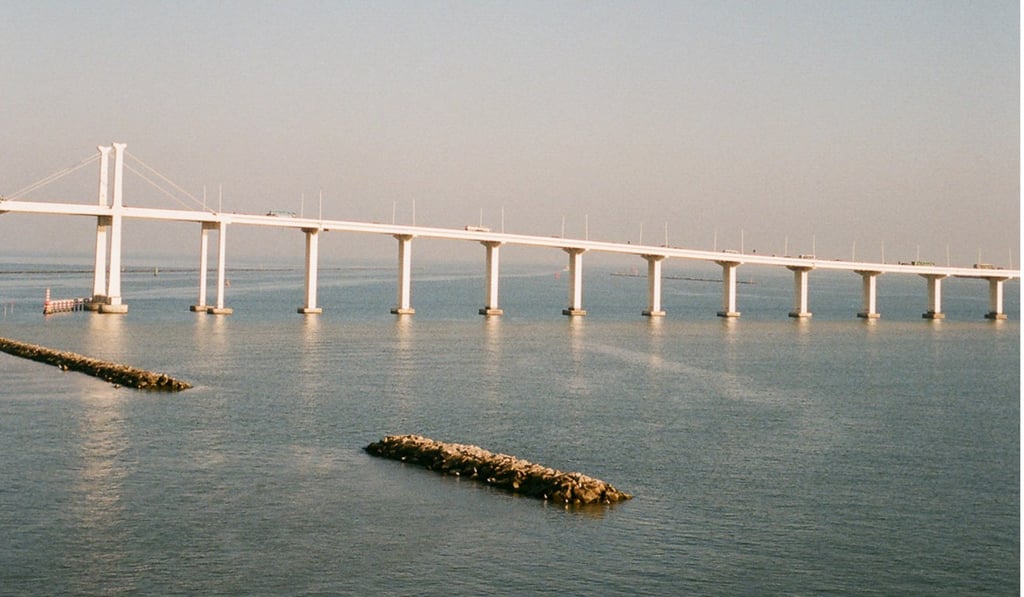
De Kock is another photographer whose hobby became a full-time job.
The South African, who is passionate about shooting with 35-millimetre (1.4-inch) film – now works with brands and magazines in Hong Kong, often shooting in a style he describes as “documentative, street and candid”.
Blue skies make for a great backdrop. If you can, make your way to Macau for a great view [of the Hong-Kong-Zhuhai-Macau Bridge] from the water
He says: “What inspires me as a photographer is observing all the various biomes and ecosystems present in the cities and places we inhabit.
“When you pull your view back a bit and start looking at the bigger picture of where people live, how they survive and their purpose for living, it all becomes rather fascinating.
“I’m not drawn to commercial and superficial beauty, but rather things and people that go unnoticed, who bring tangible benefits to their homes, rather than superficial ideals.”
For De Kock, the HZMB “is a metaphor for potential. It’s a remarkable human achievement and construction and shows what we’re capable of doing together.”
When it comes to the HKBCF, “what stood out for me at the boundary facility was the ceiling”, he says. “To me, it represented a rib cage and the facility underneath the heart of it all.”
His advice for taking great pictures of the bridge and the station is to wait for good weather.
“Blue skies make for a great backdrop,” he says.
“If you can, make your way to Macau for a great view from the water.
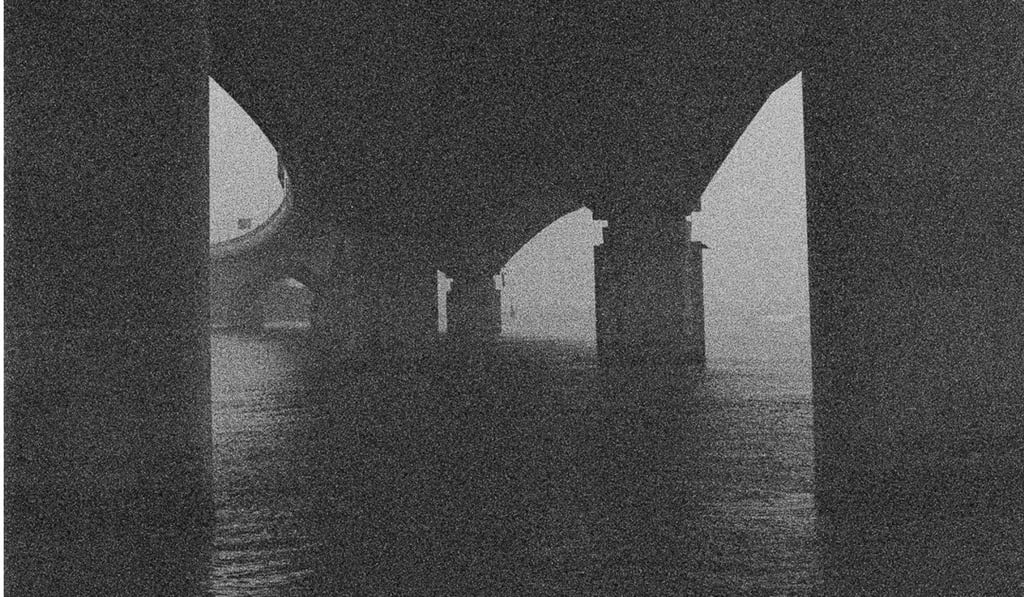
“Try different vantage points – I’d recommend making your way under the bridge, making friends with some fishermen and giving yourself a different perspective.”
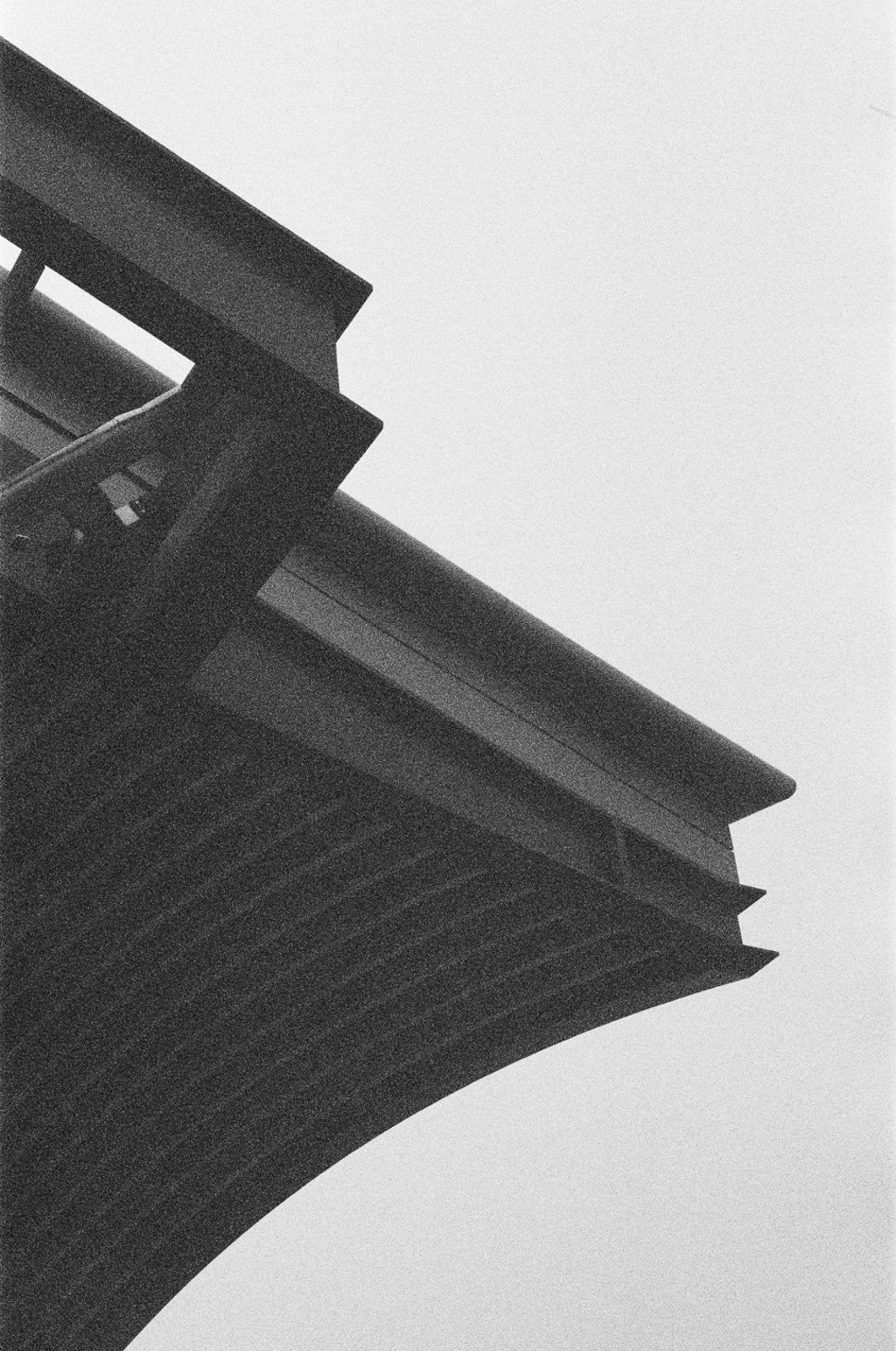
Urban artist captures cities in motion
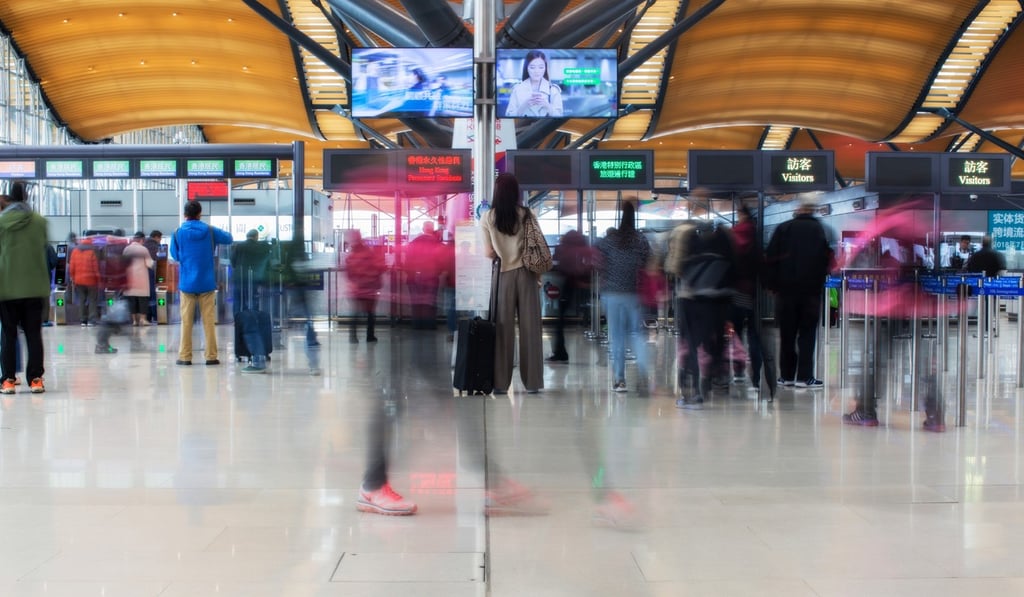
Years spent living in high-density cities have honed Kistler’s street photography skills to a fine art – one that presents everyday “unconventional perspectives”.
Kistler has been living in Hong Kong with his family since 2014.
I love the challenge of experimenting with different combinations of the cityscape ... the HKBCF has a lot of potential for abstraction – things like lines, geometry and reflection
The American is a seasoned global citizen, having worked in Beijing, Shanghai, Dubai, Dublin, Kuala Lumpur, Yangon, Istanbul and Germany, and also spending a decade living in one of the world’s most fascinating metropolises: Tokyo.
“When I photograph urban spaces, I tend to look for unusual ways to present everyday things and locations,” he says.
“There is no limit to how you can imagine and re-imagine cities and I love the challenge of experimenting with different combinations of the cityscape.
“I find it really interesting that the same location on a different day or different time of day can yield vastly different results. I love the fleeting moments and the collision of people with the surrounding urban landscape.
“As a street photographer, I find urban structure extremely photogenic.”
It is this outlook that influenced his shots of the HKBCF.
“I really liked the open space of the station, almost like it was a blank canvas primed for deconstruction,” he says.
“The HKBCF has a lot of potential for abstraction – things like lines, geometry and reflection – which I tried to use in my images.
“I also like to have an often understated human element in my urban photographs; by using techniques like blurred motion and double exposures I wanted to keep the people behind the scenes but at the same time underscore the importance of people to the overall urban scene.”
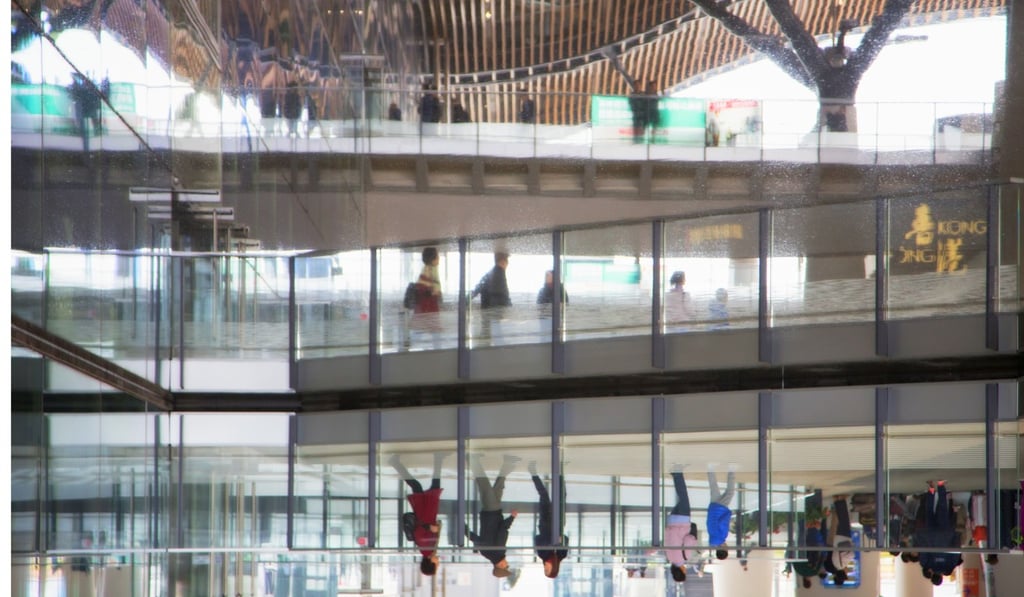
The constant motion of people coming and going comes through in Kistler’s dynamic images of the station.
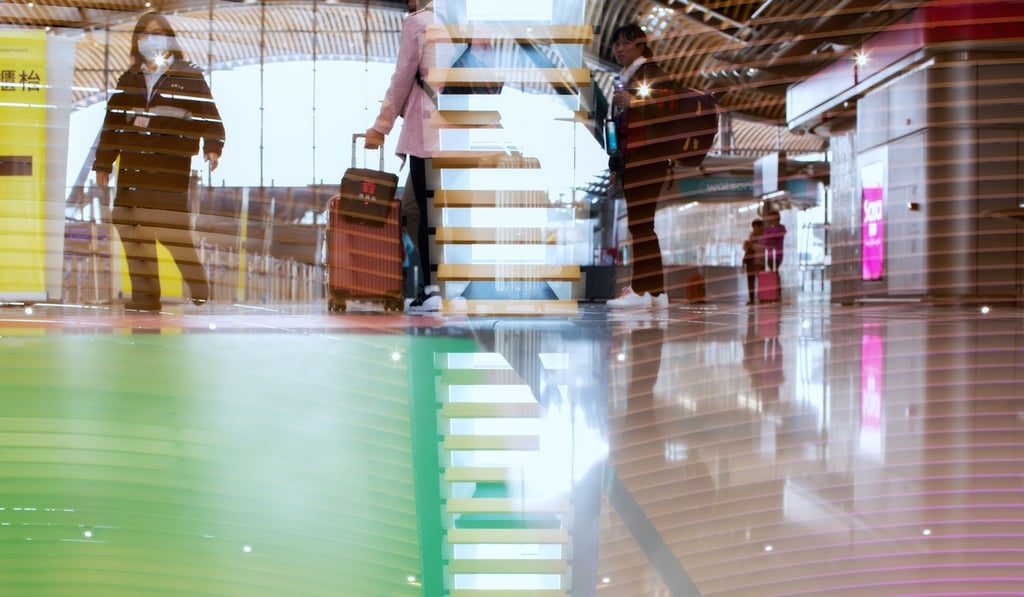
I like an understated human element by using blurred motion and double exposures to keep people behind the scenes but underscore their importance to the overall scene
“Before shooting I usually spend a bit of time observing my surroundings to get an idea of the rhythm of a location,” he says.
This helped him to see that “there were a lot of little splashes of colour that I thought complemented the lighting and overall tones”.
Kistler’s tips for the budding photographers are to “avoid the tourist shots”.
He says: “In the current Instagram age, people spend more time emulating others than creating their own unique imagery.
“Try unconventional angles and perspectives and really examine your surroundings to see what is possible.
“Remember that a camera is just a big toy – play and experiment with it. I also think revisiting locations is key, so go back another time or two if you have the chance!”